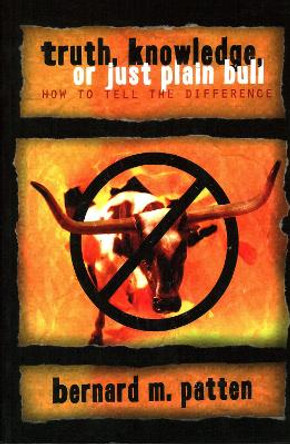Description
About the Author
Peter A. Daempfle is associate professor of biology at SUNY College of Technology at Delhi. He has taught in the sciences for more than 20 years and has served as an advisor in the standards-based reform effort, working to improve national science literacy and to advance the importance of scientific thinking.
Reviews
Daempfle describes the scientific method and critical thinking in Good Science, Bad Science, Pseudoscience, and Just Plain Bunk. . . . The author's goal is to show readers 'how to think like a scientist,' enhance science literacy, and illustrate the use and misuse of science. Case studies are included throughout the text. After the introduction, subsequent chapters describe arguing in the evaluation of science and science information; scientific tools; and championing science and scientific thinking for all people. Further discussions address critical thinking; media influence; pseudoscience; and science myths. Later chapters address the responsibilities of scientists in terms of ethics and in communication; challenges; raising the status of scientists and scientific careers; and science as an economic driver. . . . [It] will interest high school and college science students and their families and teachers. Summing Up: Recommended. All undergraduate students, high school students, general readers, and science educators. * CHOICE *
Good Science, Bad Science, Pseudoscience, and Just Plain Bunk: How to Tell the Difference addresses the nature of the sciences within a multidisciplinary context through the use of intriguing examples and a provocative writing style that urges the reader into deeper inquiry-the essence of science itself. -- Marlene M. Hurley, State University of New York, Empire State College
I find this book to be fascinating, provocative, and stimulating at the same time. Not just a "must read" for everyone in the field of science and science education, but an excellent resource for cultivating and promoting science literacy for everyone. -- Julita Lambating, California State University, Sacramento
Daempfle sets out to do something very important - to make scientific thinking more accessible to a broader segment of the future workforce. This is good for the student/future worker and good for society. -- Tom Hopcroft, president & CEO, Mass Technology Leadership Council, Inc
Getting new and non-scientists engaged in science. This book is an excellent example of what science books should bring to the conversation-how to think like a scientist and why it is important for every one of us to do so. Daempfle allows the reader to look behind the curtain and see science as a whole rather than an isolated field. This book is enjoyable especially as science myths are debunked--right up there with Mythbusters for educators! -- Jennifer A. Richardson, Purdue University
Peter Daempfle's Good Science, Bad Science, Pseudoscience and Just Plain Bunk: How to Tell the Difference is a must read for any individual who wishes to evaluate competing arguments, develop informed opinions and make sound decisions on contemporary issues involving science. It is a well-written and timely work, which will serve equally well as a textbook for scientific literacy studies in higher education. -- John R. Reeher, State University of New York
Good Science, Bad Science, Psuedoscience, and Just Plain Bunk is a book that should be required reading for every science teacher, school administrator, and STEM instructor. Is should be used in all university teacher education courses regardless of subject and on-the-job-service training seminars. This book will serve as their paramount guide to lesson design, helping educators and trainers to formulate ideas to make science education interesting, to make the teaching and learning experience for students relevant; to draw the STEM prospect into the realm of dreams, of science fiction, and into their destiny of living in science fact. * Journal Of College Student Retention *
Book Information
ISBN 9781442217270
Author Peter A. Daempfle
Format Paperback
Page Count 280
Imprint Rowman & Littlefield
Publisher Rowman & Littlefield
Weight(grams) 376g
Dimensions(mm) 229mm * 153mm * 16mm








